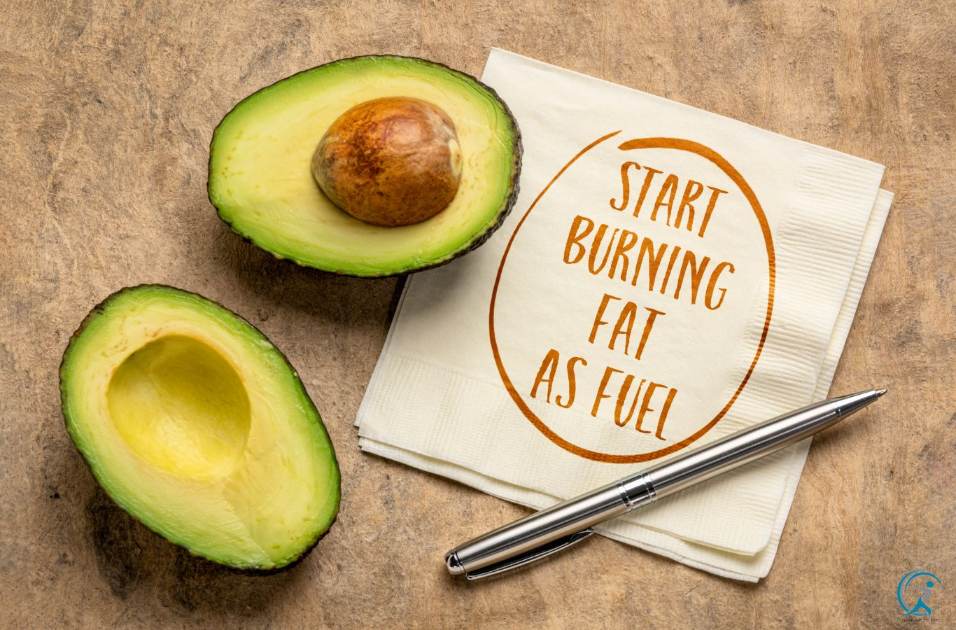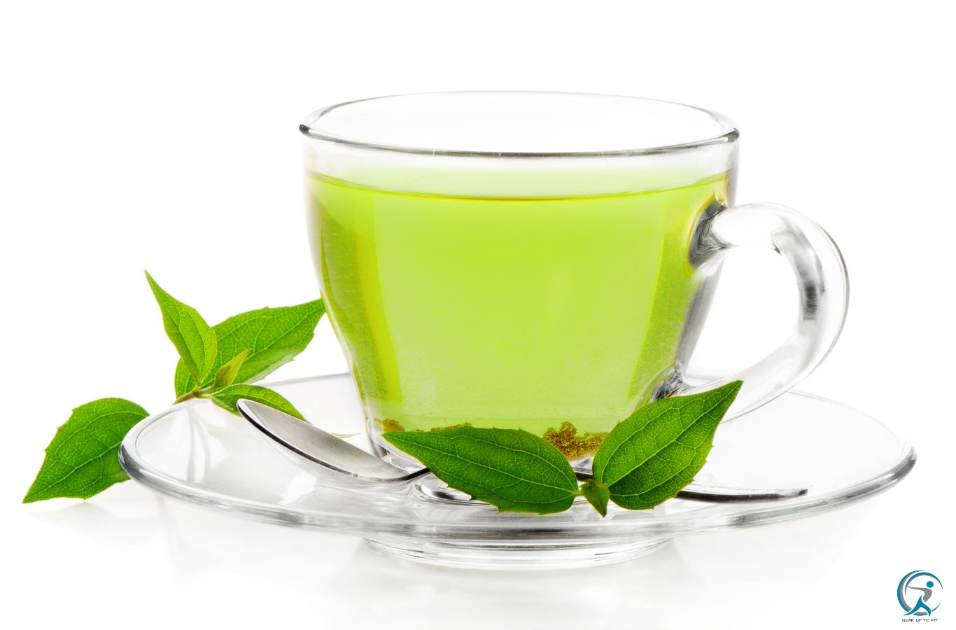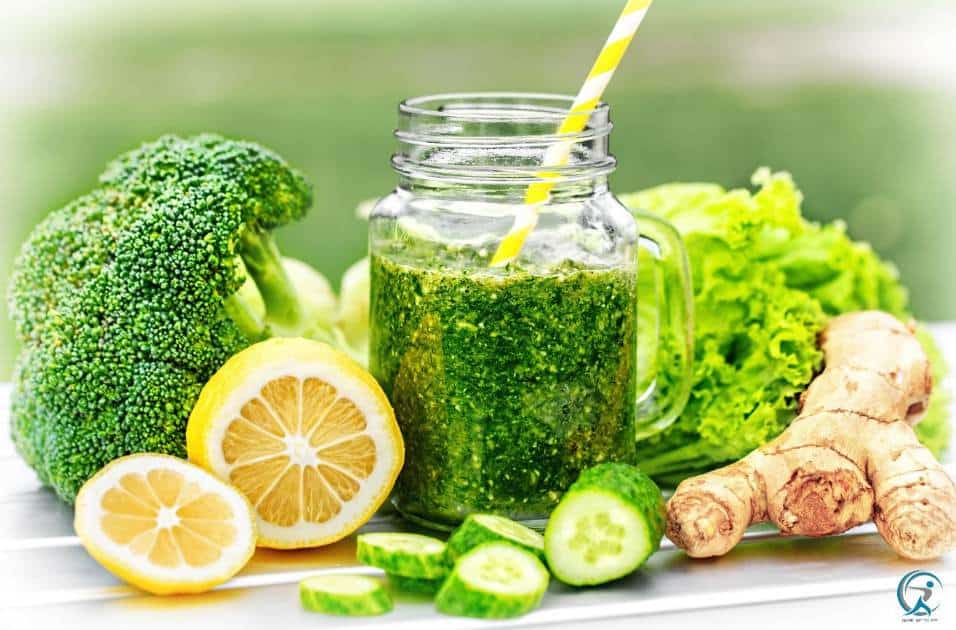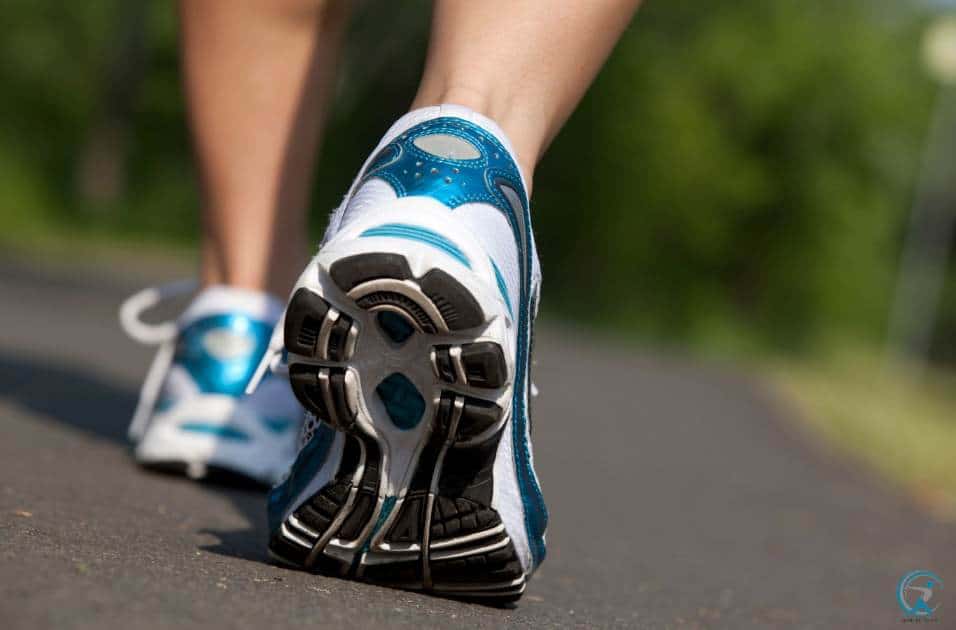In this article, you’ll learn how to boost your metabolism after 40. Learn the best ways to boost your metabolism and burn more fat.

You know that time you were told that your metabolism slows down as you age? You start to believe it and start unpicking your hair slowly, let alone ceasing activity. Let’s rewind on that and fast-forward to a new decade, research, and insights. Yes, we’re talking about the benefits of exercise, specifically how you can burn more calories after 40.
Key Takeaways:
-
Exercise regularly, focus on strength training, and eat a balanced diet.
-
Prioritize protein, limit sugar, and processed foods, and drink green tea.
-
Ensure enough sleep, manage stress, and stay active to boost metabolism.
-
Commit to at least 20 minutes of exercise daily.
-
Increase intensity, try HIIT, and include protein, fiber, and healthy fats in your diet.
-
Incorporate weightlifting, HIIT, and balance calorie intake.
-
Detox liver with lemon water, eat leafy greens, and consider probiotics for weight loss.
Regular exercise helps maintain muscle mass and combat age-induced frailty. Even better news is that regular activities help our muscles look their best and increase our metabolic rate—a term used to describe how many calories we burn at rest. So what does this mean for you? Working out will help accelerate your weight loss after 40 by raising your metabolism, so you consume fewer calories. Sounds good, right? And more importantly, are you ready to speed up your weight loss after 40?
How to Boost Your Metabolism After 40?
To increase your metabolism after 40, you should start by making exercise a habit. Try to include at least 20 minutes of exercise in your daily routine. You can also work on increasing the intensity of your workouts and adding more muscle groups to challenge your body. For example, if you want to tone up your abs, try doing planks or crunches. If you want to gain muscle mass, lift heavier weights or try an interval workout. Some additional tips are to eat more protein from foods like chicken and eggs, increase fiber intake by drinking plenty of water, and prioritize healthy fats such as avocados and nuts. As always, consult a dietician specializing in nutrition for new ideas on increasing your metabolism after 40.
Cut the carbs, lower your insulin, and lose weight.
You may have heard that carbohydrates are the enemy, and it’s true that they can cause weight gain if you eat too many. But carbs aren’t all bad—they’re important for health, especially after 40. So don’t worry! If you lose weight, you must cut your carbohydrate intake significantly—but not completely.
There are a few ways to do this:
-
Eat more fat.
-
Try intermittent fasting (IF).
-
Limit processed foods.
Eat foods that turn up your metabolic furnace.

-
Consume protein and fat every time you eat. You can have a meal or snack with nuts, seeds, avocado on toast, a few olives, etc. You can also have an egg-white omelet with vegetables or lean meat (with the fat removed). Fats should be healthy fats such as those found in avocados and nuts/seeds. Protein-rich foods are satiating, keeping you full until your next meal.
-
Eat whole grains with every meal to boost metabolism and keep blood sugar levels stable for all-day energy and to avoid unhealthy snacks.
-
Drink plenty of water throughout the day, so your cells stay hydrated and perform at their best. The more efficiently they keep us alive, the faster our metabolism will be!
Don’t skimp on protein.
Protein is a key component of muscle, which gives us the body we want. Protein also helps produce the hormone that burns fat, so it’s essential to get enough protein to lose weight. Another thing that protein does is help build up the immune system, so if you’re feeling run down or often tired and want to boost your energy level, consider adding more protein to your diet!
Protein is also used by almost every part of our bodies—including our brains!
Use caffeine to your advantage.
Caffeine can help you burn calories, build muscle, and lose weight.
Caffeine is so versatile. It’s no wonder people have been using it for centuries. The substance has been used to treat headaches and depression. Most of us are aware that caffeine has various benefits for weight loss, such as increasing metabolism, boosting energy levels, and aiding in fat burning.
Lift weights and try high-intensity interval training.

Weightlifting boosts metabolism, making it very beneficial. It also prevents injuries, improves posture, and increases bone density. Skipping the gym to save time or because you’re busy with outfit choices for an event is not advisable. It harms you over time.
What should you do at the gym? Try High-Intensity Interval Training (HIIT). This involves short bursts of intense activity with rest periods in between during your workout. It’s challenging but very rewarding. HIIT, also known as Tabata training after Izumi Tabata, a Japanese scientist, is effective. It improves both aerobic and anaerobic fitness and burns more fat compared to longer workouts.
Jump Start Your Weight Loss With Exercise
You don’t need to start intense exercises to boost your metabolism. Just sign up for a gym or pick a sport you like. Adding cardio like running, swimming, or biking also helps increase your metabolism. If getting off the couch is hard, remember the extra benefits. Exercise after 40 improves bone density and reduces heart disease risk. Follow these tips, and you’ll lose weight after 40 faster than you think!
Incorporate Strength Training to your Exercise Routine
When you’re over 40, fat loss can be tricky. And it’s even harder when you don’t have the motivation to exercise. But there are ways to burn fat and increase your metabolism after 40.
The best way to get lean is to combine cardio and strength training. Studies show that weight-bearing exercises like squats and deadlifts help with weight loss, especially if you incorporate high-intensity interval training (HIIT) and use heavier weights.
A recent study found that women who did 15 minutes of HIIT and strength training twice a week lost more weight than those who did HIIT alone or just strength training. The reason: Strength training helps build muscle, which burns more calories at rest than fat does.
Strength training also helps preserve muscle mass as you age, prevent osteoporosis and balance hormones that affect appetite control and metabolism — all of which contribute to faster fat loss after 40 years old
Drink Green Tea

Drinking green tea can help boost your metabolism and melt fat fast.
Green tea is brewed from the leaves of Camellia sinensis, a plant native to Asia. The leaves are picked and dried, then ground into a fine powder. Green tea contains polyphenols — powerful antioxidants that may help protect against cancer and heart disease — and polysaccharides, which may help prevent obesity by increasing satiety (the feeling of fullness).
Green tea may also increase calorie burning. A study published in the journal Nutrition & Metabolism found that people who drank four cups of green tea each day burned about 70 additional calories a day compared to those who didn’t drink green tea. That’s about 300 calories per week — or 1 pound!
Balance your Calorie Intake
Track what you eat. If you’re eating more calories than burning off, you’ll gain weight. If you’re eating fewer calories than you’re burning off, then you’ll lose weight. So not only should you be tracking how many calories you eat in a day (or week or month), but also what kind of foods those calories come from — protein, carbs and fat. Knowing this information will give you a better idea of whether or not your current diet is working for or against you in terms of weight loss or maintenance.
Increase your activity level by 10%. While it’s true that exercise alone won’t result in fat loss, it’s still essential if you want to achieve your ideal body composition and maintain it long-term. At least 30 minutes of moderate-intensity cardio at least five days per week is recommended for general health purposes — but if your goal is weight loss and/or maintenance, then aim for 60 minutes per day.
Detox your Liver

The liver is the body’s largest organ and plays a vital role in maintaining good health. The liver breaks down nutrients, filters blood, produces bile, and much more.
As we age, our liver becomes less efficient at performing these functions. This can lead to several health problems, such as increased fat storage, inflammation, diabetes, low energy levels, fatigue, etc.
As we get older, toxins build up in our bodies, making us more prone to disease and illness. This is particularly true if you have been consuming unhealthy foods for a long time or taking medications that impact your liver. If you are looking for ways to detoxify your body after 40 then here are some tips:
1) Drink Lemon Water – Studies show that lemon juice has many benefits, including improving digestion, boosting immunity and helping with weight loss by cleansing the body of toxins. Add a teaspoon of lemon juice to water every morning before breakfast for best results!
2) Eat More Leafy Greens – Leafy greens such as kale contain magnesium which helps remove toxins from the body through sweat during exercise or simply walking around town!
Get your Probiotics
You can boost your metabolism, get rid of your belly fat, and lose weight fast.
A study by the University of Nebraska Medical Center discovered that post-menopausal women who consumed probiotics lost five times more weight than women who did not.
The study was done on 40 women between 45 and 65 years old with a BMI over 30 kg / sqm. Participants were split into two groups: one took a placebo, while the other took probiotics for 6 months.
The results showed that those who took probiotics significantly decreased their body fat percentage compared to the placebo group. Moreover, they lost an average of 1 kg per month!
Protect Yourself From Obesity And Build Muscle!
After 40 It’s no surprise that people with a higher metabolic rate are more likely to maintain weight, which is why it’s important to ensure your muscles are intact. Exercise will help you build muscle mass and protect yourself from obesity. It’s also important to keep your body active after 40 to prevent age-related frailty and weakening joints or bones. Regular exercise helps maintain muscle mass and combat age-induced frailty. Even better news is that regular activities help our muscles look their best and increase our metabolic rate—a term used to describe how many calories we burn at rest. So what does this mean for you? Working out will help accelerate your weight loss after 40 by raising your metabolism so you consume fewer calories than before. Sounds good, right? And more importantly, are you ready to speed up your weight loss after 40?
Get More Sleep

Many people think skipping sleep and exercising is a perfect formula for weight loss. Not only does this lead to fatigue, but it also slows your metabolism. How is this possible? Well, it’s the following: if a person isn’t getting enough sleep, their body will force them to dip into stored fat more quickly to provide energy. This means they will be burning fewer calories throughout the day. While exercise is great for weight loss, you must also ensure you get enough sleep. So make sure you don’t skimp on your Zzzs and put in some cardio before bedtime!
Limit sugar, processed foods, and junk food.
The most important step to speed up weight loss after 40 is to limit sugar, processed foods, and junk food. The more sugar, processed food, and junk food you consume, the fewer calories your body will burn at rest. That’s the bottom line. So how do you eat these foods without feeling guilty? Easy! Eat in moderation. Meaning, if it’s a special occasion or if you have a craving for dessert, have one small piece of cake or cookie instead of a whole plateful. It might not be fun, but it’ll save your waistline in the long run.
Watch your alcohol consumption.
The National Institute on Alcohol Abuse and Alcoholism released a report. It shows that older adults who drink often are less likely to exercise. Drinking affects how we think. This affects our ability to move well, coordinate, and keep balance. This is bad for people who want to continue running or going to the gym. If you want to prioritize your workouts, stop drinking alcohol. Focus on your health and wellness instead.
Eat whole foods.
Whole foods are foods that haven’t been processed or refined. This includes fruits, vegetables, grains, and legumes (beans). Processed foods have been altered from their natural state, for example, by adding sweeteners or removing nutrients.
Whole-wheat bread is made from whole wheat flour. It’s a whole food. White bread, on the other hand, is different. It loses its outer layer, called the bran, during processing. Artificial ingredients are also added to make it soft and tasty. If you always eat white bread, you probably miss out on many nutrients. These nutrients are found in real, 100% whole grain flour.
Don’t eat after 8 p.m.
If you’re over 40 and want to boost your metabolism, pay attention to your diet’s timing and quality. Avoid eating late at night. Stick to healthy meals for breakfast, lunch, and dinner. You can have a snack in the afternoon.
Eating after 8 p.m. can lead to weight gain, studies show. Eating late affects how well our bodies process food. This is because of our circadian rhythms. These rhythms affect our sleep and how our bodies metabolize food during the day.
Walk more and exercise.

Exercise is an essential part of the equation when it comes to shedding fat and boosting your metabolism. The more you move, the more calories you burn. The Mayo Clinic says walking for 30 minutes a day can burn 150–250 calories.
The good thing about exercising after 40 is that you don’t need long gym sessions or tough workouts. A quick walk can increase your metabolism and quickly reduce fat. As you get older, you know what exercise works best for you. If you don’t like getting sweaty, look for activities that keep you moving without getting too uncomfortable. This means you don’t have to join intense classes like SoulCycle or CrossFit unless you want to.
Drink more water.
You may not know that drinking more water can help you lose weight and boost your metabolism. Drinking water helps you feel full, making it easier to avoid overeating or snacking throughout the day. It also helps burn calories, so if you drink two cups before every meal and snack, you’ll save around 80–100 calories per day! Plus, staying hydrated keeps your energy levels up and improves digestion by helping food move through your digestive system faster.
Eat foods rich in vitamins and minerals.
The first step to increasing your metabolism is eating various foods. This includes a wide range of fruits, vegetables, whole grains, and lean protein sources.
Make sure your diet is rich in vitamins and minerals. These nutrients support the enzymes that help your metabolism. Include plenty of fiber in your meals. Fiber makes you feel full, reducing how much you eat. This means your body uses more energy to digest food. You can get a lot of your daily fiber from a cup of raspberries or blackberries. Add healthy fats to your diet, like avocado and olive oil. These fats improve your cholesterol levels, which can increase your metabolism and benefit your heart. Use these oils for cooking instead of butter or other saturated fats. This helps keep the calorie count down, especially if you’re trying to lose weight.
Eat fiber-rich foods.
Eating fiber-rich foods is very good for your health. Foods high in fiber help you feel full and maintain regular bowel movements, reducing the temptation to eat too much. They can also lower your blood sugar and cholesterol, help avoid constipation, and support heart health by decreasing cholesterol absorption. Research links high-fiber diets to lower risks of obesity, type 2 diabetes, and heart disease. A study conducted at Harvard University found that women who consumed 25 grams of fiber per day had a 46% lower risk of developing metabolic syndrome. This syndrome raises the risk of type 2 diabetes and heart disease. It is more common in women who eat 10 grams of fiber or less each day.
Get enough sleep daily.
Sleep is one of the most important things you can do to help your metabolism and burn fat. Studies have shown that getting enough sleep helps increase your metabolism by as much as 15%. Sleep also improves insulin sensitivity, promotes weight loss, and boosts muscle growth.
Lack of sleep can make you feel hungrier, crave unhealthy food, have difficulty concentrating, and perform poorly at work or school. Poor quality sleep can cause memory problems in the brain’s short-term and long-term memory storage systems.
Avoid Stress
Stress can cause weight gain, overeating, unhealthy eating habits, and a lack of exercise. It can also make you tired, irritable, and less likely to sleep well.
If you’ve been feeling stressed, it’s important to learn how to manage your stress levels as part of your weight loss program.
If you follow the tips above, your metabolism will increase.

Your metabolism will increase if you follow the tips above. A higher metabolism helps you burn more calories at rest and lose weight. It can also help to decrease your risk of developing diabetes or heart disease.
Metabolism turns food into energy. It transforms what we eat into sugar and fat. These are stored as glycogen in muscles or triglycerides in fat tissue. When we need energy, these are released and burned as fuel by muscles and organs like the brain. This storage lets us save fuel for times when we don’t eat, like during sleep. It helps us keep going daily until our next meal.
Conclusion
Embrace the journey of boosting your metabolism after 40 with determination and commitment. By incorporating regular exercise, strength training, and mindful nutrition, you pave the way for a healthier and more energetic lifestyle. Remember to prioritize self-care, adequate sleep, and stress management to optimize your metabolism and achieve your weight loss goals.
Take charge of your well-being today and start implementing these strategies to revitalize your metabolism and enhance your overall health. Let this be the beginning of a vibrant and fulfilling chapter in your wellness journey. Are you ready to ignite your metabolism and embrace a healthier you after 40? Start now and feel the transformation within!
References
-
“12 simple ways to increase your metabolism in your 40s and beyond” by Women’s Health Magazine (https://welltech.com/content/how-to-increase-metabolism-after-40/)
-
“Boosting Your Metabolism After 40: Here Are 10 Proven Strategies” by Only My Health (https://www.onlymyhealth.com/english/amp-stories/home-remedies/right-way-to-boost-your-metabolism-ws-13784)
-
“How To Increase Metabolism After 40 [Top Tips For Busy Men]” by The Fit Father Project (https://www.youtube.com/watch?v=o0sqbHsfpAM)
-
“How to Boost Metabolism After 40” by The Perfect Workout (https://www.stewardtoday.com/unlocking-the-7-secrets-to-increase-metabolism-after-40/)
-
“Unlocking the 7 Secrets to Increase Metabolism After 40” by Steward Health Care (https://www.eastewart.com/fitness-balanced-living/how-to-boost-your-metabolism/)
As a veteran fitness technology innovator and the founder of GearUpToFit.com, Alex Papaioannou stands at the intersection of health science and artificial intelligence. With over a decade of specialized experience in digital wellness solutions, he’s transforming how people approach their fitness journey through data-driven methodologies.